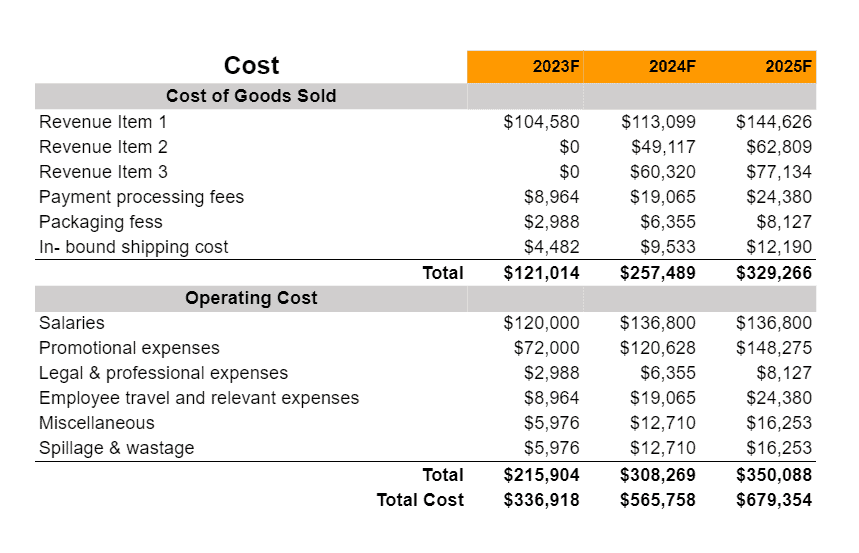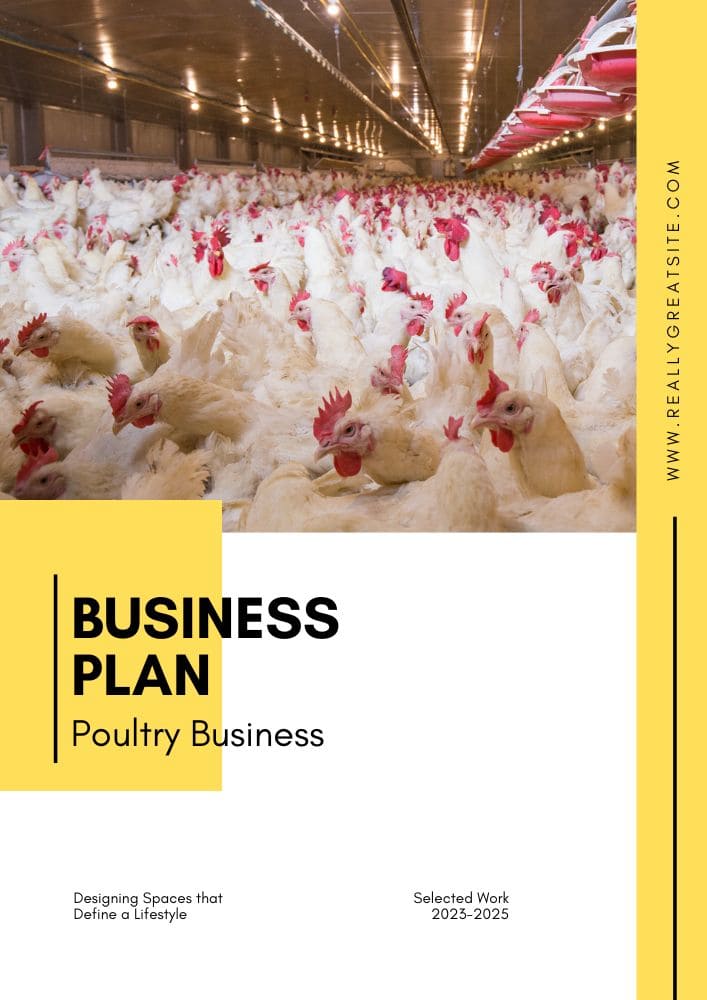Written by Elma Steven | Updated on April, 2024

How Do I Write the Poultry Business Plan?
Poultry Business Plan is an outline of your overall Poultry business. The business plan should includes a 5 year financial projection, marketing plan, industry analysis, organizational overview, operational overview and finally an executive summary. Remember to write your executive summary at the end as it is considered as a snapshot of the overall business plan. You need to be careful while writing the plan as you need to consider various factors that can impact the business’s success.
Executive Summary
In the varied agricultural terrain of Miami, Florida where Sarah Martinez founded Miami Cluck Farms a sustainable fowl farm. Our farm is known for its ethically bred chickens and we provide a wide selection of high-quality chicken goods such as eggs and meat among other things.
Sustainability in farming where humane treatment of chickens and the availability of hormone- and antibiotic-free goods supplied locally constitute our USP. A unique selling point of Miami Cluck Farms is the direct farm-to-table delivery of healthy ethically raised chicken to Miami residents.
Mission:
Miami Cluck Farms is a family-run business that uses sustainable and ethical agricultural techniques to provide the Miami neighborhood chicken that is both fresh and healthy. Our commitment to rearing hens in a natural setting ensures that they are healthy and content which in turn provides our consumers with high-quality goods. Building great connections with local companies and customers is our top priority along with being transparent and providing high-quality service.
Vision:
Here at Miami Cluck Farms where we want to make a reputation for ourselves in the Miami area’s food business by becoming an industry leader while also improving the health of our community and the environment. Our goal is to be the gold standard when it comes to ethical methods and high-quality goods in the poultry farming sector. Our long-term goals include increasing our visibility in the area, spreading awareness about the importance of sustainable agriculture and inspiring Miami residents to eat more mindfully.
Industry Overview:
An enormous market and room for expansion characterize the United States’ poultry business which is booming and changing at a rapid pace. Predictions for the next five years indicate a market size of $56.2B with a CAGR (compound annual growth rate) of 1.7%. Several causes will contribute to this expansion such as the rising need for protein, demand for chicken and the rising need for services and goods connected to poultry.
Check out this guide on how to write an executive summary? If you don’t have the time to write on then you can use this custom Executive Summary Writer to save Hrs. of your precious time.
Financial Highlights
Revenue & Earnings

Source: statista
Cost of Goods Sold & Expenses

Source: mordorintelligence
Break- Even Analysis

Investments or Fund Usage Plan

Source: feedandadditive
Business Description
Business Name:Miami Cluck Farms
Founders: Sarah Martinez
Management Team:

Legal Structure: LLC
Location: Miami
Goals & Objectives:
✔️Build a Strong Client Base: Focus on attracting a diverse clientele within the first year, from local grocery stores and restaurants to individual consumers ensuring a steady demand for your poultry products.
✔️Enhance Brand Recognition: Develop a strong brand presence in Miami and surrounding areas through targeted marketing, collaborations with local food events and active engagement on social media platforms to highlight your farm’s unique qualities and offerings.
✔️Deliver High-Quality Products: Consistently offer high-quality, fresh and ethically produced poultry products that meet or surpass industry standards thereby establishing a reputation for excellence and reliability.
✔️Expand Product Range and Services: Within two years to aim broaden your offerings, perhaps by introducing organic or free-range products, adding new poultry varieties or offering butchery and packaging services.
✔️Achieve Financial Stability: Strive for a long-term financial model that can withstand market fluctuations by combining operational expenses with successful pricing methods and achieving consistent revenue growth in the first three years.
Services:
✔️Wide Range of Poultry Products: Offer a variety of poultry products, including different types of chicken meat cuts, fresh eggs and possibly other poultry varieties like ducks or turkeys to cater to varied consumer preferences.
✔️Organic and Free-Range Options: For customers who are concerned about their health and who want to support sustainable practices offer organic and free-range chicken.
✔️Custom Processing Services: Offer custom processing services such as butchering, packaging and specific meat cuts to cater to individual customer preferences or local businesses’ needs.
✔️Farm-to-Table Experience: In order to guarantee freshness and a strong relationship with your goods you may create a farm-to-table experience by enabling clients to buy straight from the farm either via farm visits or local delivery services.
✔️Subscription Services: Implement a subscription model where customers can receive regular deliveries of fresh poultry products, ensuring steady business and customer loyalty.
Business Model Canvas
Check out 100 samples of business model canvas.
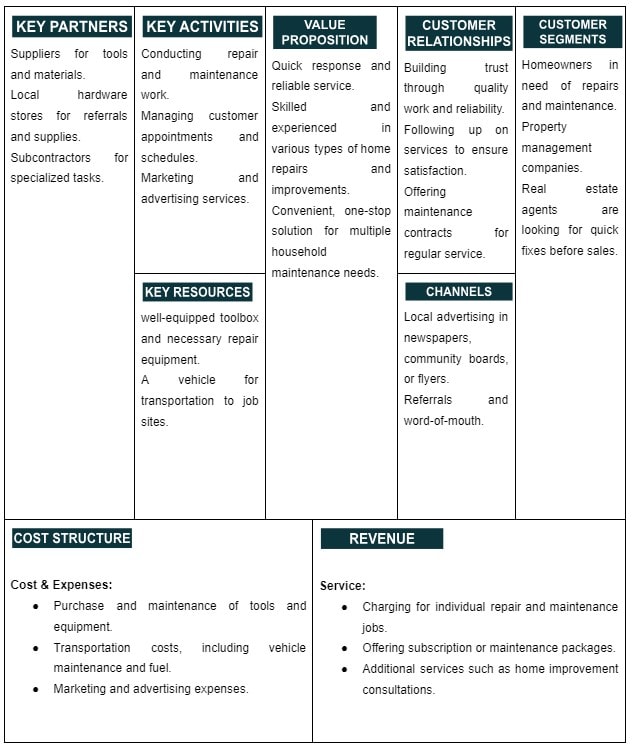
SWOT
Check out the 100 SWOT samples which will give you a better idea on SWOT writing process.

Marketing Plan
Promotional Channels
Social Media Marketing – $15,000 (30%):
✔️Utilize platforms like Instagram, Facebook and Twitter to showcase your poultry products, farm operations and sustainable farming practices.
✔️Implement targeted ads to reach local households, restaurants and food enthusiasts.
✔️Create a content marketing plan that showcases your poultry products’ freshness, quality and ethical elements. This should include customer testimonials and informative pieces on the advantages of using responsibly reared and locally sourced chicken.
Website and SEO – $10,000 (20%):
✔️In order to showcase your variety of poultry products, farm narrative and client testimonials your website should be easy to use, aesthetically pleasing and educational.
✔️Regularly update a blog with posts about sustainable farming practices, recipes and the benefits of fresh, locally-sourced poultry to drive organic traffic.
✔️Use keywords pertaining to chicken farming, organic eggs, free-range hens and local food sources to enhance your website’s visibility in search engines.
Email Marketing – $5,000 (10%):
✔️Develop a regular newsletter to share farm updates, special promotions and highlight seasonal products.
✔️Segment your email list to tailor messages to different customer groups such as individual consumers, restaurants and grocery stores.
Local Partnerships – $7,000 (14%):
✔️Collaborate with local restaurants, cafes and food markets to supply them with fresh poultry products in creating mutually beneficial relationships.
✔️Participate in community events, food fairs and farmers markets to increase visibility and connect with potential customers.
Local Advertising – $6,000 (12%):
✔️Invest in local advertising through community newspapers, magazines and local online forums.
✔️Sponsor local events or initiatives to build brand recognition and community goodwill.
Direct Sales and Community Outreach – $4,000 (8%):
✔️Implement direct sales strategies like farm stands or delivery services to sell directly to consumers.
✔️Engage in community outreach programs and educational talks to promote awareness of your poultry products and farming practices.
Referral Program – $3,000 (6%):
✔️Implement a referral program offering discounts or incentives to customers who refer new clients to your business.
Additional Marketing Strategies:
✔️Farm Tours and Events: Host farm tours and open days to engage with the community and educate them about your farming methods.
✔️Sustainability Messaging: Emphasize your commitment to sustainable and ethical farming practices in all marketing materials.
✔️Customer Testimonials: Encourage satisfied customers, especially local businesses, to provide testimonials or reviews that can be used in marketing materials and on social media.
✔️Packaging and Branding: Invest in eye-catching, eco-friendly packaging that reinforces your brand’s commitment to quality and sustainability.
Go To Market Strategy
Online Presence and Community Engagement:
✔️Professional Website: Create an interesting and easy-to-navigate website that highlights your brand’s history, the methods used on your farm and the variety of chicken products you provide. Online ordering and an educational blog are two things that should be included.
✔️Content Marketing: Regularly publish blog posts or articles focusing on topics like sustainable poultry farming, health benefits of your products and recipes to drive organic traffic and interest.
✔️Local Directory Listings: Ensure your business is listed in local online directories and food industry portals to enhance local search visibility.
✔️Partnerships: Collaborate with local restaurants, grocery stores and food markets to supply them with fresh poultry products, thereby creating mutually beneficial relationships.
Product Launches and Promotions:
✔️Seasonal Offerings: To entice consumers and generate excitement consider introducing seasonal items or special discounts such as chicken packages themed after the holidays.
✔️Introductory Discounts: Provide initial discounts or bundle deals to encourage first-time buyers to try your products.
Digital Marketing and Customer Relations:
✔️Social Media Campaigns: Showcase your wares, publish testimonials from satisfied customers and provide details about your farming methods on social media sites like Instagram, Facebook and Twitter.
✔️Email Marketing: Send out newsletters with updates on new products, special promotions and relevant news from your farm.
✔️Loyalty Program: Implement a program to reward repeat customers such as discounts on future purchases or referral incentives.
Brand Awareness and Community Involvement:
✔️Local Media Outreach: Engage with local newspapers, radio stations and community channels for features, interviews and to share unique aspects of your poultry business.
✔️Community Events: Take part in or support community gatherings like fairs and farmers’ markets to meet new people and spread the word about your business.
✔️Influencer Collaborations: Partner with local food influencers, bloggers for product reviews and increased social media exposure.
Performance Tracking and Adaptation:
✔️Customer Feedback: Regularly collect feedback from customers to understand their preferences and improve product offerings.
✔️Analytics: Use tools like Google Analytics to track website traffic and social media engagement metrics.
✔️Strategy Refinement: Be ready to adjust your marketing strategies based on performance data, changing market trends and customer feedback.
Organizational Overview
The organizational overview section summarizes the company’s structure and operations. It explains the organizational structure including the hierarchy of reporting relationships, ownership and responsibilities of key management personnel. This also explains how the founder’s past experiences and credentials can help make the business successful.
Founder

Sarah Martinez singular perspective and unwavering commitment has established herself as a trailblazing figure in the poultry industry. Sustainable farming techniques and a dedication to provide high-quality and ethically grown chicken products were the foundation of her quest. Chicken raising are now second nature to Sarah thanks to her years of practical expertise in the field. Everything from the birds’ nutritional requirements to their ethical treatment is something she has a good grasp on. In order to maximize output while guaranteeing the health of her chickens she goes above and beyond conventional wisdom by using cutting-edge practices and technology.
Establishing her chicken farm in Miami local produce encapsulates her entrepreneurial mentality. Creating a sustainable and ethical source of chicken goods for the community is at the heart of Sarah’s business concept which goes beyond basic poultry supply. By being open and honest with her customers about where her goods come from and how good they are she hopes to build a relationship based on trust and loyalty.
Sarah has made a firm commitment to sustainability and quality her business’s guiding principles. Equipped with infrastructure that guarantee the birds live in ideal circumstances and following ecologically friendly procedures her farm is a demonstration of best practices in poultry farming. This promise ensures that her goods are obtained in an ethical and responsible manner and are both fresh and healthy.
Positions and Responsibilities
Chief Executive Officer (CEO) :
The poultry company’s overarching strategic direction and management are under your purview as CEO. Important business decisions, operations, resource management and representing the organization in industry interactions are all part of your job description.
Farm Manager:
Every aspect of running a chicken farm is within the purview of the farm manager. Supervising farm employees, making sure everything is safe and in order, the chickens are well taken care of and keeping the production quality high are all part of the job description.
Veterinary and Animal Health Specialist:
This role focuses on the health and well-being of the poultry. Duties include regular health check-ups, monitoring flock health, administering vaccinations and implementing biosecurity measures.
Sales and Marketing Manager:
Responsible for developing and implementing strategies to market and sell poultry products. This includes identifying market opportunities, managing customer relationships and promoting products through various channels.
Customer Service Representative:
Handling customer inquiries, orders and feedback this role is key to ensuring customer satisfaction and managing the business’s public relations.
Organogram
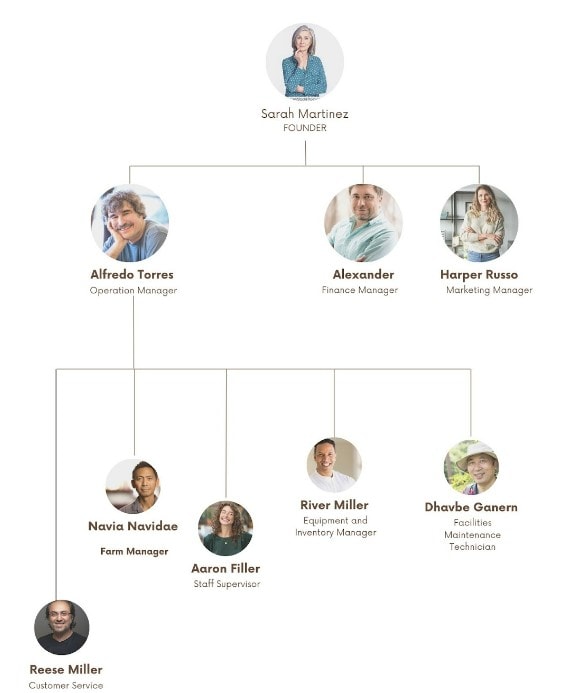
Operational Overview
Fresh Poultry Sales:
✔️Offer a variety of poultry products, including fresh chicken, ducks and possibly other fowl.
✔️Emphasize the freshness and quality of your poultry raised in a healthy and sustainable environment.
Egg Production and Sales:
✔️Sell fresh, farm-raised eggs, emphasizing their organic and free-range qualities.
✔️Offer various sizes and packaging options for both retail and wholesale customers.
Custom Processing Services:
✔️Provide custom butchering and processing services such as specific cuts or packaging based on customer preferences.
✔️Ensure that all processing is done humanely and meets health and safety standards.
Farm-to-Table Delivery Services:
✔️Implement a delivery service for local customers, offering them the convenience of fresh poultry products delivered to their doorstep.
✔️Emphasize the farm-to-table aspect highlighting the local and sustainable sourcing of your products.
Wholesale Distribution:
✔️Supply poultry products to local restaurants, grocery stores and markets at wholesale prices.
✔️Focus on building long-term relationships with business clients by offering reliable and consistent supply.
Industry Analysis
In 2023, the worldwide poultry business is projected to be worth $332 billion, showcasing its dynamic and always changing nature. Projections see this industry expanding from $202 billion in 2022 to $400 billion in 2027 is a compound annual growth rate (CAGR) of 4.1%. Anything having to do with raising, processing and selling chickens or their eggs is considered part of the poultry business. As a protein staple for millions of people throughout the globe it is an important factor in ensuring food security on a global scale.
Increased demand for poultry as a protein source among consumers is fueling rapid expansion in major global markets such as the US, China, Brazil and the EU making this an important and dynamic business overall. Poultry production and consumption are booming in emerging nations throughout South America, Africa and Asia due to factors including increasing wages, changing eating patterns and larger average family sizes. Both large-scale integrated producers and smallholder farms make up the business. While the former tend to dominate in terms of volume the latter are vital to regional economies and food security.
Organic, free-range and antibiotic-free farming techniques are on the increase due to the growing demand for chicken products from consumers who are looking for ecologically and ethically produced options. There are number of obstacles that the sector must overcome such as disease epidemics, environmental worries and unpredictable feed prices. Producers are adjusting by putting money into biosecurity, environmentally friendly methods and effective feed management. Animal welfare and productivity are both being improved by technological advancements in breeding, nutrition, housing and digital monitoring.
Other key trends and stats:
✔️Poultry is a popular choice for consumers due to its affordability and efficiency.
✔️Advancements in poultry farming have led to increased productivity and lower costs.
✔️Poultry is perceived as a healthier protein option compared to red meat.
✔️The poultry industry is a significant contributor to the global economy and job creation.
✔️Poultry is a nutritious food source that provides essential vitamins and minerals.
Industry Problems
✔️Feed Costs and Supply Chain Management: Feed represents a significant portion of production costs. Strategies include negotiating better prices with suppliers, exploring alternative feed options and efficient inventory management to reduce waste.
✔️Health and Biosecurity: Disease outbreaks can devastate poultry operations. Implement strict biosecurity measures, regular health checks and vaccinations to maintain flock health.
✔️Market Competition and Pricing: Facing competition from larger poultry businesses and imported products focus on differentiating your products, perhaps through quality, organic or free-range attributes and competitive pricing strategies.
✔️Regulatory Compliance: Stay knowledgeable about and comply with all necessary legislation involving animal welfare, food safety and environmental effect. Compliance may be better maintained with the support of regular audits and certifications.
✔️Product Diversification: Spreading your products out might help you weather changes in the market. This may include a variety of chicken breeds, egg production or value-added goods such as packaged meats.
Industry Opportunities
✔️Flexible Pricing and Packages: Apply a sliding scale for the price of chicken products based on their quantity and category. Customers ranging from individuals to big businesses like restaurants may be catered to by offering package offers or discounts for bulk purchases.
✔️Efficient Scheduling and Order Management: To make things easier you must use an online booking system to handle orders and questions. With this system, you can cater to your customers’ unique demands and guarantee effective order fulfillment by offering many alternatives for order sizes and delivery timetables.
✔️Investment in Quality Breeds and Feed: Focus on acquiring high-quality poultry breeds and nutritious feed. This investment is crucial in producing healthier, more robust birds, leading to better quality meat and eggs which can attract discerning customers who prioritize product quality.
✔️Skilled Workforce and Continuous Training: Employ skilled workers for managing poultry and provide them with ongoing training. This ensures they are up-to-date with the best practices in poultry care, health management and biosecurity measures which are crucial for maintaining flock health and productivity.
✔️Creating an Optimal Farm Environment: Maintain a farm environment that is conducive to poultry health and well-being. This includes proper housing, temperature control and ample space which are essential for healthy, productive birds.
Target Market Segmentation
Geographic Segmentation
✔️Urban vs. Rural Markets: Understand and cater to the differing needs of customers in urban areas who might prioritize convenience and packaged products compared to rural customers who might prefer live birds or bulk purchases.
✔️Local Neighborhoods: In urban areas like Miami, target specific neighborhoods known for their culinary diversity or health-conscious communities with tailored products.
Demographic Segmentation:
✔️Age Groups: Offer products that cater to different age demographics. Younger consumers might prefer quick and ready-to-eat options while older consumers might value traditional poultry products.
✔️Income Levels: Provide a range of products, from more affordable, basic poultry options to premium, organic or specialty poultry products for higher-income customers.
✔️Cultural Diversity: Honor the diverse population of Miami by stocking a range of chicken items that are suitable for use in a number of dishes.
Psychographic Segmentation:
✔️Health-Conscious Consumers: Develop and market a line of health-focused poultry products such as organic or free-range options.
✔️Ethical and Eco-Friendly Consumers: Cater to those who prioritize sustainability and animal welfare with ethically raised poultry and transparent farming practices.
Behavioral Segmentation:
✔️Regular Buyers vs. Occasional Purchasers: Create loyalty programs or subscription services for regular customers and offer special promotions or deals for holidays and special events to attract occasional buyers.
✔️Bulk Buyers: Offer bulk purchasing options at competitive prices for businesses like restaurants or small retailers.
Technological Segmentation:
✔️Online Shoppers: Develop an online ordering system with delivery options for tech-savvy customers who prefer shopping online.
✔️Traditional Buyers: Continue to serve customers who prefer buying from physical locations such as local markets or directly from the farm.
Lifestyle Segmentation:
✔️Culinary Enthusiasts: Offer specialty poultry products and recipes for customers interested in gourmet cooking and culinary exploration.
✔️Convenience-Oriented Consumers: Provide easy-to-cook or ready-to-eat poultry options for customers seeking convenience such as pre-marinated or pre-cut chicken.
Market Size
✔️The Total Addressable Market (TAM): This encompasses the whole prospective chicken product market in your chosen nation or area. All sorts of commercial organizations including homes, restaurants, grocery shops, food processing plants and more make up this vast market for chicken goods. Population growth, changing eating habits and the demand for various poultry products (e.g., organic chicken, turkey and eggs) all contribute to the total market potential in the poultry business which in turn determines the size of the total addressable market (TAM).
✔️Serviceable Addressable Market (SAM): This is the market that your company has a reasonable chance of successfully penetrating. Geographic reach, poultry product specialty and manufacturing capacity are some of the criteria used to categorize businesses in this way. A firm that sells a variety of traditional chicken items would have a different SAM than one that specializes in organic poultry goods. The geographic component will also determine your SAM if your distribution network can only serve a certain area or group of cities.
✔️The Serviceable Obtainable Market (SOM) : Here you may find the percentage of your SAM that, considering your present company skills and competitive positioning, you should be able to capture. Considerations like as production capacity, pricing tactics, brand recognition, marketing and sales efficacy and the quality of your poultry goods all play a role in this measure. To help you concentrate your operational and strategic choices on gaining and extending your share in the most important areas of the market, the SOM provides a realistic objective for your organization in terms of sales and revenue.
Industry Forces
Market Demand and Industry Trends
✔️Consumer Preferences: Trends like the increasing demand for organic, free-range, or specialty poultry products are shaping consumer preferences and buying habits.
✔️Health and Dietary Trends: The growing awareness of healthy eating habits and protein-rich diets can boost the demand for poultry products.
Competition
✔️Diverse Competitors: Your competition ranges from local small-scale poultry farms to large commercial suppliers. Differentiating your business through product quality, ethical farming practices or niche markets (like antibiotic-free poultry) is crucial.
✔️Market Positioning: Whether targeting local markets or aiming for broader distribution, understanding and strategically positioning yourself in the market is key to staying competitive.
Technological Advances
✔️Farming Technology: Advancements in farming technology can enhance the efficiency and sustainability of your poultry production.
✔️Digital Presence: Leveraging online platforms for marketing and direct sales can broaden your customer reach and offer convenience.
Regulatory Environment
✔️Food Safety Regulations: Compliance with food safety and animal welfare regulations is critical in the poultry industry.
✔️Environmental Regulations: Adhering to environmental standards and practices can influence your operational methods and public image.
Economic Factors
✔️Pricing Strategy: Economic conditions and consumer purchasing power impact pricing strategies. Offering a range of products to cater to different market segments can be beneficial.
✔️Cost Fluctuations: Managing fluctuations in feed and maintenance costs effectively is crucial for maintaining profitability.
Financial Statements
The financial model has all the important financial statements including Income Statement, Balance Sheet and Cash Flow Statement. In addition, the financial model includes 3 to 5 years of projections and can be edited using Microsoft Excel or Google Sheets.
Income Statement
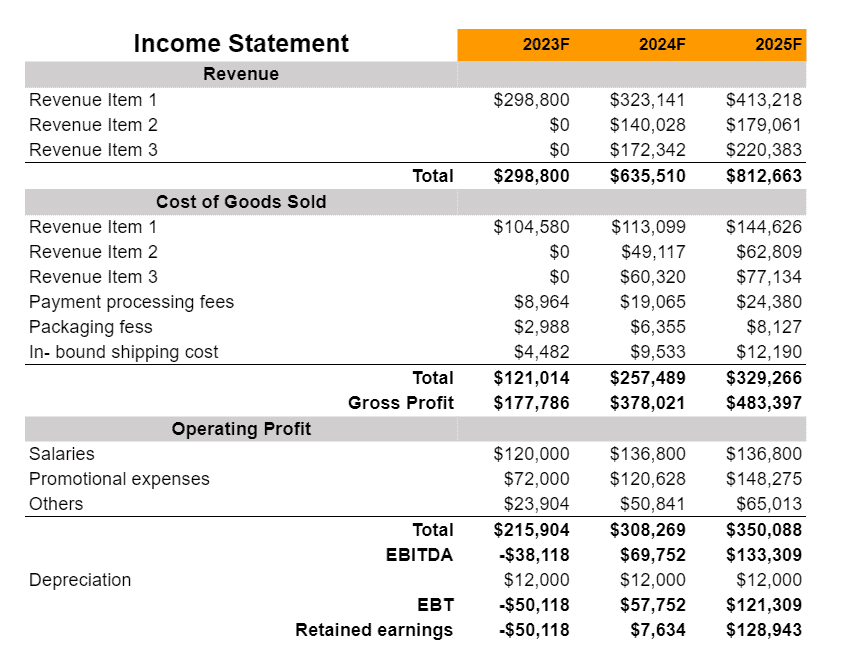
Cash Flow Statement
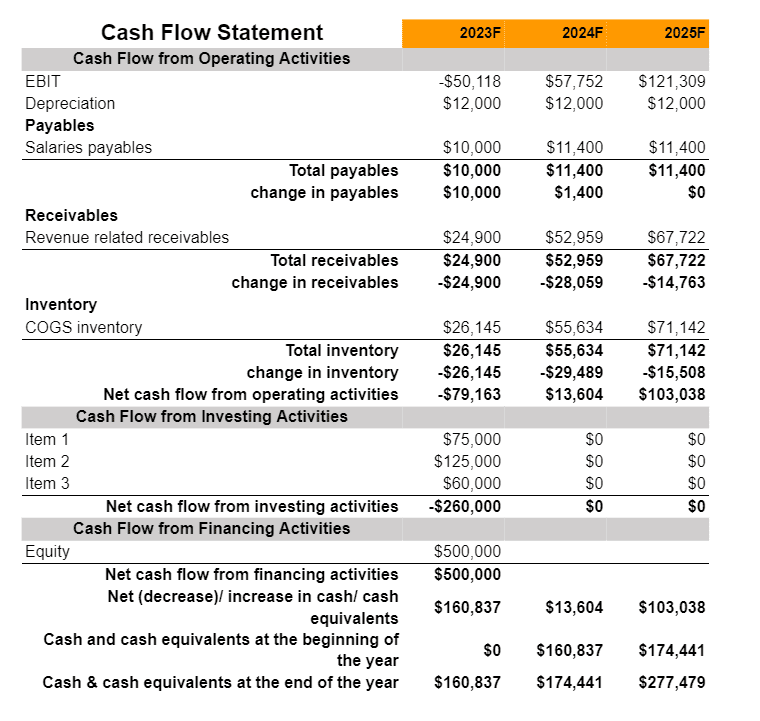
Balance Sheet
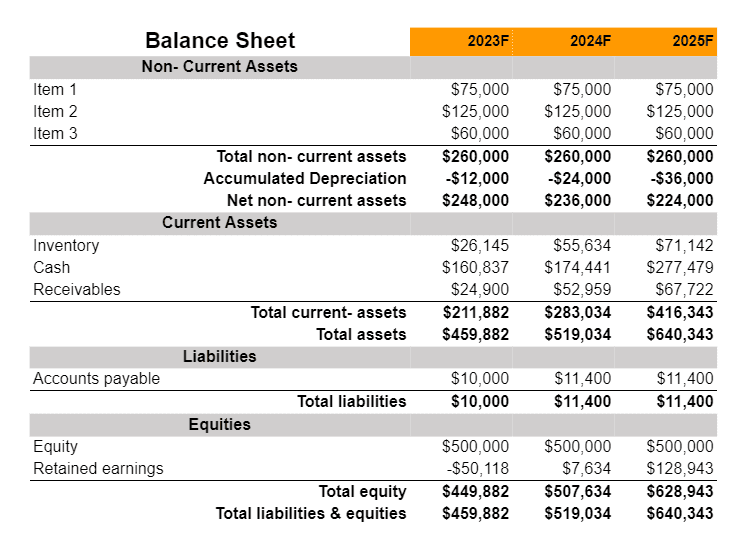
Revenue Summary
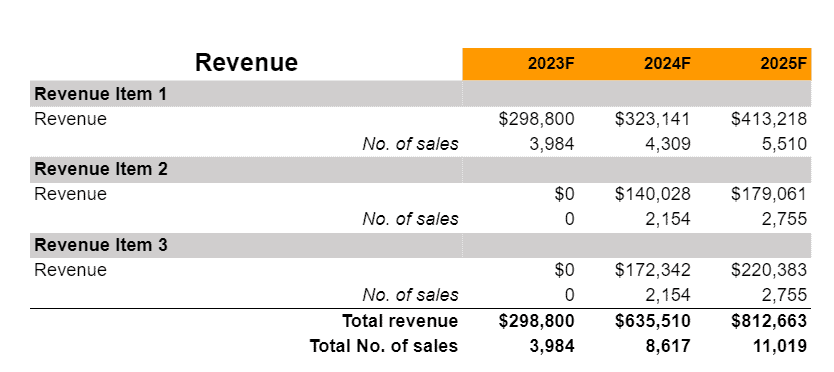
Cost of Goods Sold
